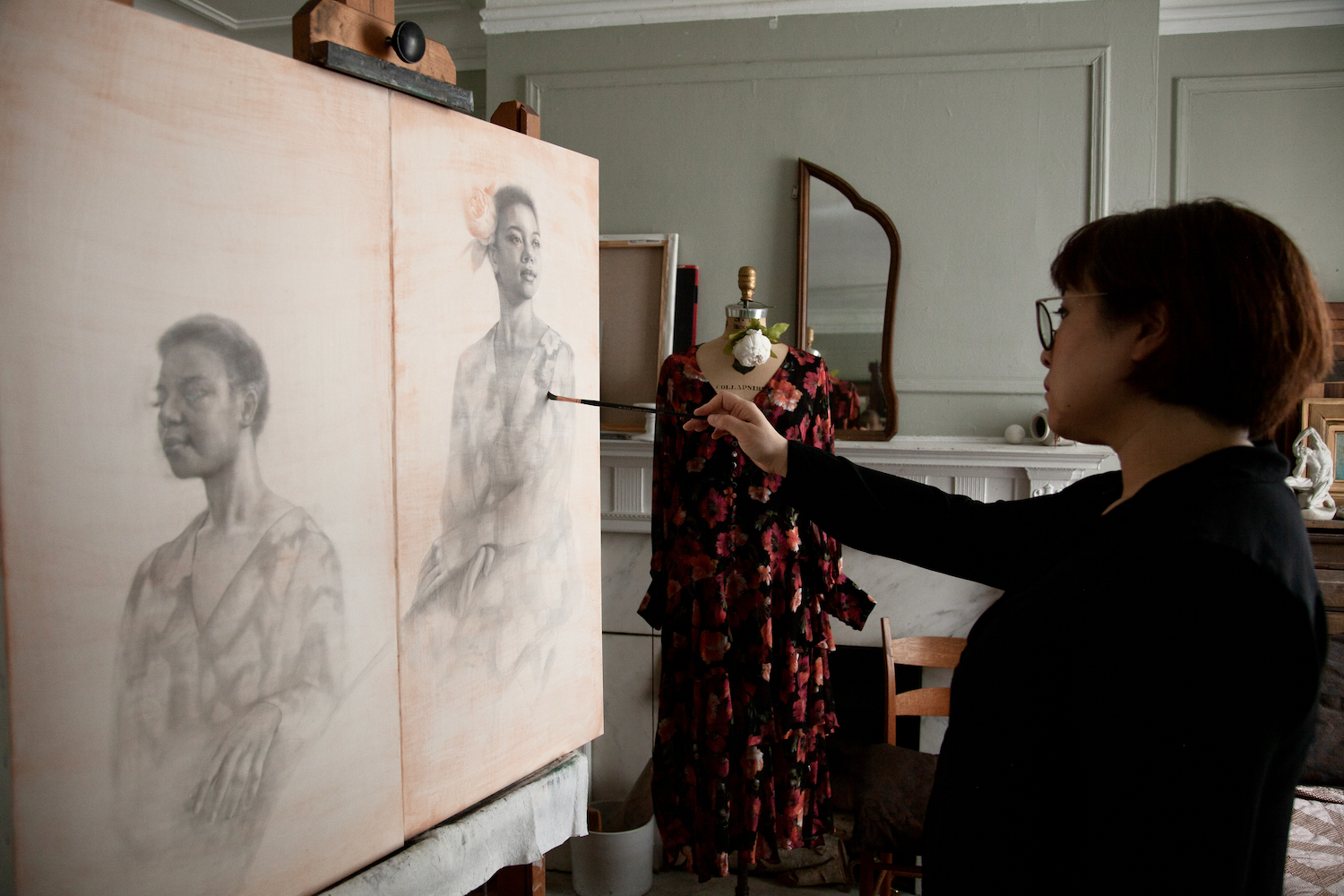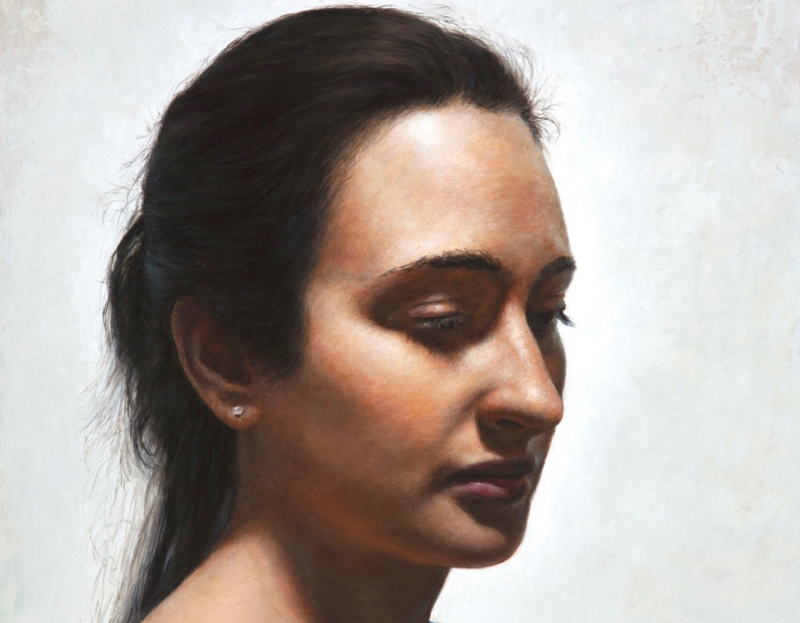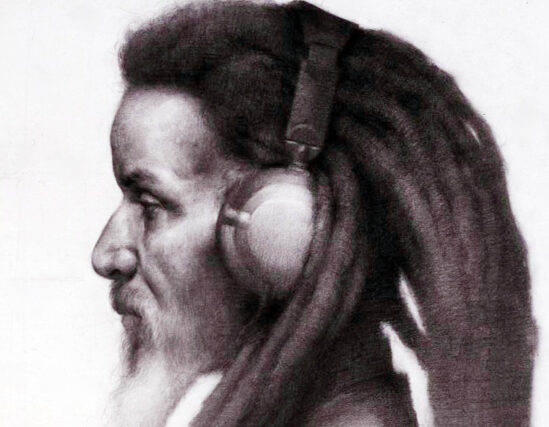
At what age did you decide to become an artist?
Probably toward the end of my college years, but the idea was not firmly planted until I came to the Art Students League to study. I’ve always been drawing and painting since I was little; I just didn’t connect my thoughts to become “an artist.” Creating artwork has been my way of recording beauty in life, and I will continue to do so for the rest of my life.
How did your parents react when you told them you wanted to become an artist?
When I decided to go to the US for college, I knew I wanted to study art. My father suggested changing my major, but I didn’t change my mind. They have been incredibly supportive.
Who are your favorite artists?
If I have to choose out of so many of my favorites: Diego Velázquez, Rembrandt, Sir Thomas Lawrence, John Singer Sargent, Joaquín Sorolla y Bastida, Pietro Annigoni, Edwin Dickinson, Santiago Rusiñol, Ramon Casas.
Who is your favorite artist whose work is unlike your own?
Sculptor Gian Lorenzo Bernini. In oil painting, I’m fascinated when the paints transform into objects, in the same way Bernini has the magic to turn the marble into the figure and show the presence of the figure. An absolute favorite of mine is The Ecstasy of Saint Teresa at the Church of Santa Maria della Vittoria, Rome.
Art book you cannot live without?
My source of inspiration changes, but these two are always at the heart of it: Pietro Annigoni Il Periodo Inglese: 1949–1971 by Luciano Pellizzari, and The Drawings of Edwin Dickinson, with an essay by Lloyd Goodrich.
What is the quality you most admire in an artist?
The ability to depict a scene from the everyday life and turn something so ordinary into something special. For figurative work and portraits, the ability to put the life into the sitter or a model.
Do you keep a sketchbook?
Yes. I bring a sketchbook to museums to take notes and do compositional sketches. Also, many sketchbooks are lying around in my studio for brainstorming and preliminary drawings.
What’s your favorite museum in all the world?
Museo Nacional del Prado, The Metropolitan Museum of Art, Le Gallerie degli Uffizi, and Palazzo Pitti.
What’s the best exhibition you have ever attended?
There are three, all equally important to me. First, All the Rembrandts at Rijksmuseum in 2019, which presented the museum’s entire collection of Rembrandts. Second, in 2011–12, Leonardo da Vinci: Painter at the Court of Milan at the National Gallery in London. It was the talked about exhibition, so it was impossible to get an advanced ticket before I flew in. After my arrival, I went to the museum opened. The day ticket sold out almost immediately. On the second day, I went earlier, but the tickets were sold out again. By the third day, I was so determined that I took a cab at 2 am to stand in line. I was stunned that I was not the first person to be there. The gentleman who beat me was also Japanese. I got two timed tickets, one for the morning and another for the evening. In between, I went back to the hotel and took a nap. There were two parts to the exhibition, and I stayed in the first part to see all of Leonardo’s pieces. I got to spend one-on-one time with each one of Leonardo’s paintings My third exhibition pick is Annigoni at Palazzo Strozzi back in 2000. It was my first time viewing Annigoni’s work in person. Seeing the density of tempera grassa, his ink drawings, and pencil drawings—I was in heaven.
If you were not an artist, what would you be?
I narrowed down the options by choosing the path I felt right. I can’t recall the paths that I didn’t choose. Perhaps I would choose another way to record beauty in everyday life.
Did you have an artistic cohort that influenced your early creative development?
Yes, it was Ronald Sherr’s class at the Art Students League. I met great people there. We painted together, and I saw them every day while striving to be a better painter. I think I learned a great deal from my classmates.
What is one thing you didn’t learn in art school that you wish you had?
I think I got what I needed so I could work on my own. I had three phases of my art education, where I learned different aspects of creating art. The first phase was at the Massachusetts College of Art and Design. There, I had a broad introduction to all kinds of mediums—painting, etching, computer animation and design, 3D art—during my freshman year. Once I declared a major, I was given a studio space. I learned to be alone and come up with ideas, to create art and meet deadlines, and to face critics during midterms and finals where I had to explain why I created a particular body of work.
My second phase began in my junior year. I chose to study abroad in Florence. It served as an intense art history class where I could see all the masterpieces in person. I traveled as much as I could.
Then my phase three, with a strong push from my mentors in Boston, Paul Rahilly (an Art Students League alumnus) and Janet Monafo, I moved to New York to study with Ronald Sherr at the Art Students League. Ron truly taught me all the technique that I needed to know to go off on my own. Most importantly, he trained my eyes to see my mistakes. I painted intensely from life, day and night. I also had the privilege to study with Harvey Dinnerstein, who modeled for me what is like to be an artist over a lifetime.
I would have loved to have learned how to break into the art world, but it seems everyone has different path.
What work of art have you looked at most and why?
I find myself going back to Velázquez’s work. Receiving two grants from the Art Students League afforded me an opportunity to copy two Velázquez’s paintings at the Prado, in Spain. The experience deepened my understanding of his work and technique.
What is your secret visual pleasure outside of art?
A Formula 1 car race. There’s a beauty in the fastest cars created by the best engineers in the world.
Do you listen to music in your studio?
Yes, it changes the mood of the day but is something that doesn’t interfere with my thoughts. Sometimes I listen to lectures.
What is the last gallery you visited?
Sugarlift and Sato Sakura Gallery.
Who is an underrated artist people should be looking at?
I would love to see a special exhibition in the US of Spanish artists Santiago Rusiñol, Ramon Casas, Mariano Fortuny y Marsal.
What art materials can you not live without?
My drafting pencils, Tombow Mono Zero round erasers, Old Holland paints, Claessen’s linen, Holbein painting knives and good brushes, the list goes on.
Do you paint/sculpt/create art every day?
Yes, on different levels. I mostly work in the studio, but if I don’t feel like working on the particular piece, I may brainstorm, sketch, or go to museum. I am constantly working and creating, physically or in my head.
What is the longest time you went without creating art?
Probably during my pregnancy. I was put on bed rest for five weeks. I was not sure whether I could deliver my twins safely. The two lives I was carrying were so important that all I could do was sketch and read art books. Also, the time my father suddenly passed away, I stayed in Japan to take care of all the paperwork and family. These two events happened within a year. It was the year to see the whole lifespan—to be born and to die. Life matters: the life that you live and the lives you protect.
What do you do when you are feeling uninspired?
Stretch canvas, tone paper, or visit a museum. Take a stroll in Central Park.
What are the questions that drive your work?
I don’t think my drive is coming from “why.” It’s about finding the moments that I’m simply inspired by. I am recording beautiful moments from every day.
What is the most important quality in an artist?
The drive to create and execute.
What is something you haven’t yet achieved in art?
Creating one drawing or painting that I’m 100% satisfied with. But that is what I keep striving for.
What is the best thing about art in the era of social media?
Connecting with people that I would never be able to meet otherwise.
YUKA IMATA (@yuka_imata) teaches portrait drawing and painting at the Art Students League.




